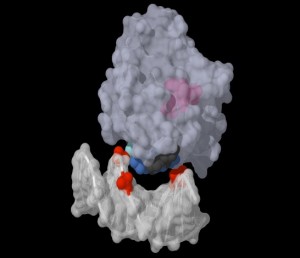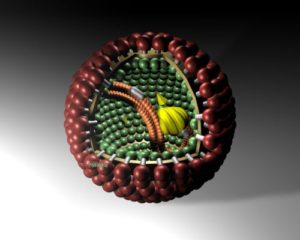 With the discovery of increasing numbers of different virus-like entities, all of which transfer DNA and RNA information between cells, the importance of virus intelligence keeps increasing. Not only do viruses continue to show new complex behaviors in adapting to any cell, organism or situation, they are, also, critical friends and enemies to bacteria, plants and animals. This post and the next will discuss recent findings in the past year since two previous posts on virus intelligence were written. (June, 18, 2012 “Are Viruses Alive and Sentient?” and December 24, 2012, Giant Viruses, Microbe Intelligence and Evolution.”) This post will give a virus intelligence update. The next post will discuss newly discovered viruses and the ever-enlarging number of virus like particles that are transmitting essential information between all living organisms and their critical role in every aspect of evolution. If viruses are intelligent then these particles must be also.
With the discovery of increasing numbers of different virus-like entities, all of which transfer DNA and RNA information between cells, the importance of virus intelligence keeps increasing. Not only do viruses continue to show new complex behaviors in adapting to any cell, organism or situation, they are, also, critical friends and enemies to bacteria, plants and animals. This post and the next will discuss recent findings in the past year since two previous posts on virus intelligence were written. (June, 18, 2012 “Are Viruses Alive and Sentient?” and December 24, 2012, Giant Viruses, Microbe Intelligence and Evolution.”) This post will give a virus intelligence update. The next post will discuss newly discovered viruses and the ever-enlarging number of virus like particles that are transmitting essential information between all living organisms and their critical role in every aspect of evolution. If viruses are intelligent then these particles must be also.
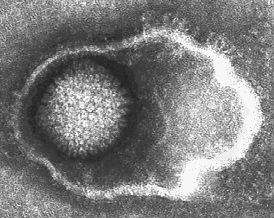 The previous post described the incredible ingenuity of the dangerous herpes virus (alive in 90% of all humans) overcoming many obstacles to live dormant for years or decades in neurons, and then later to activate and damage neurons. The previous post (Are Virus Alive and Sentient?) showed that the herpes virus attached themselves to the complex dynein motors in the neuron to
The previous post described the incredible ingenuity of the dangerous herpes virus (alive in 90% of all humans) overcoming many obstacles to live dormant for years or decades in neurons, and then later to activate and damage neurons. The previous post (Are Virus Alive and Sentient?) showed that the herpes virus attached themselves to the complex dynein motors in the neuron to 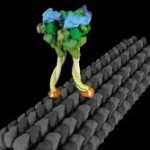 travel rapidly along the microtubules to the nucleus.
travel rapidly along the microtubules to the nucleus.
But, now it has been shown that the viral protein interacts with the dynein motor, overtaking the motor and its ATP energy source. The herpes virus is not a passive passenger on the dynein motor, but, rather grabs 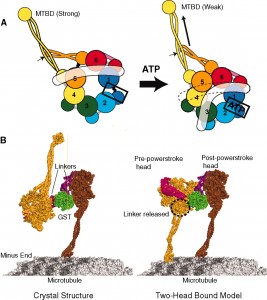 the wheel and increases the speed. The virus that causes cold sores, genital herpes, chicken pox and shingles moves very rapidly when it wants to from the skin to the nucleus of the neuron to create more viruses.
the wheel and increases the speed. The virus that causes cold sores, genital herpes, chicken pox and shingles moves very rapidly when it wants to from the skin to the nucleus of the neuron to create more viruses.
Viruses Are the Most Prevalent Life Form
Viruses that attack bacteria, phage virus, are the most prevalent life form on earth. Just the phage viruses in the ocean would equal the mass of 75 million blue wales. They invade bacteria ten trillion times a second and kill half of the ocean bacteria each day. The White Cliffs of Dover are dead microbes 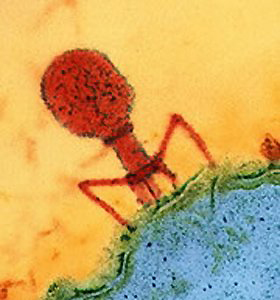 killed by virus. If a single phage virus is added to 10 billion E coli, in 2 hours there are 10-trillion phage virus, and 0.1% of the E. Coli remaining.
killed by virus. If a single phage virus is added to 10 billion E coli, in 2 hours there are 10-trillion phage virus, and 0.1% of the E. Coli remaining.
Viruses attach to cells by indentations, by change of pH, and by allowing themselves to be engulfed in sacs and the biting their way out of the sacs. Inside neurons, viruses travel 400 times faster than diffusion by attaching to and manipulating the motors in neurons that move along the microtubules. They then hijack nuclear pore protection systems, and the extremely complex DNA mechanisms. They imitate signaling for DNA repair systems and take over the editing systems. While doing all this travelling, they are evading all levels of the immune system (see post on intrinsic cellular immunity called “Non Immune Cells Also Combat Microbes“). Somehow they understand the complex cellular process and with a small number of genes can make multiple unique proteins to outsmart the large cells.
Positive and Negative Relations with Bacteria
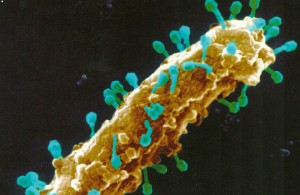 Viruses have a positive and negative relationship with bacteria, called “temperate” and “lytic”. When bacteria go to a new space, their viruses protect them. Some viruses will only attack bacteria they were not born in. Viruses give bacteria toxins to fight other enemy bacteria; they give genes that enable bacteria to fight against antibiotics; they give plants genes that enable them to handle drought, heat and cold; they make rye grass toxic to animals to protect the grass; in humans hep C has microRNA to control the hepatic cell.
Viruses have a positive and negative relationship with bacteria, called “temperate” and “lytic”. When bacteria go to a new space, their viruses protect them. Some viruses will only attack bacteria they were not born in. Viruses give bacteria toxins to fight other enemy bacteria; they give genes that enable bacteria to fight against antibiotics; they give plants genes that enable them to handle drought, heat and cold; they make rye grass toxic to animals to protect the grass; in humans hep C has microRNA to control the hepatic cell.
 In bacteria CRISPR elements (Clustered Regularly interspaced short palindromic repeats) create immunity to any new DNA that comes into bacteria, such as viruses. These CRISPR repeats are multiple copies of microbe DNA with virus stuck in between. By using these CRISPR elements, specific microRNA are created that fight the virus. It is a bacterial immune system against viruses.
In bacteria CRISPR elements (Clustered Regularly interspaced short palindromic repeats) create immunity to any new DNA that comes into bacteria, such as viruses. These CRISPR repeats are multiple copies of microbe DNA with virus stuck in between. By using these CRISPR elements, specific microRNA are created that fight the virus. It is a bacterial immune system against viruses.
Virus can immunize bacteria from other phages. By using the DNA from the virus microbes can use increased types of nutrients or kill competitors. Virus lives in the cell as a plasmid or in the genes giving these gifts.
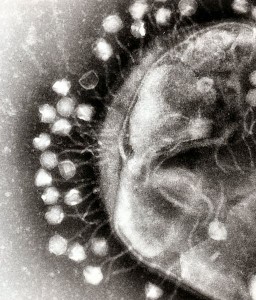 With stressful situations, perhaps little food, the virus can turn against the bacteria and become lytic (destructive). The virus in this situation might kill other bacteria but protect their own host bacteria. They increase genetic transfer to help brethren bacteria survive.
With stressful situations, perhaps little food, the virus can turn against the bacteria and become lytic (destructive). The virus in this situation might kill other bacteria but protect their own host bacteria. They increase genetic transfer to help brethren bacteria survive.
Importantly, bacteria are able to create their own viruses, possibly from DNA previously placed by viruses. Enterococcus faecalis bacteria live peacefully in the gut. But, when in the blood they create phage viruses to kill other strains of bacteria competing for food. It appears that the bacteria can create viruses at will.
Defense against Antibiotics
 When attacked by antibiotics, microbes in the human gut have an unlikely helper. In another twist, viruses living in the gut that usually attack bacteria actually provide bacteria with genes to protect themselves from antibiotics. These genes appear to help not only against the existing antibiotics but others as well. These phage viruses are involved in creating the resistant super bacteria that are so dangerous to humans.
When attacked by antibiotics, microbes in the human gut have an unlikely helper. In another twist, viruses living in the gut that usually attack bacteria actually provide bacteria with genes to protect themselves from antibiotics. These genes appear to help not only against the existing antibiotics but others as well. These phage viruses are involved in creating the resistant super bacteria that are so dangerous to humans.
The viruses actively collect these resistance genes, harbor them and then transfer them back to other bacteria for survival.
But, viruses are not only critical to bacteria. They are also critical for humans and other animals.
Viruses can be Friends or Foes of Humans
There are many examples of negative activity of viruses in humans. But, recently, some positive effects have been found as well.
A new startling finding is a new human immunity system where viruses protect humans.
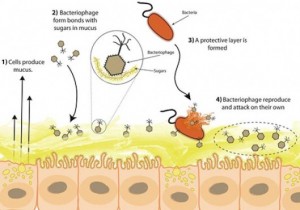 This new immune system protecting humans from bacteria was recently discovered in mucous. Mucous is a home for many protective bacteria and fungi, which fight infection of other hostile microbes. Most animals’ moist membrane regions use mucous. In most animals tested, phage viruses (the type of virus that attack bacteria) form links with surface sugars in mucous. The viruses have antibody like molecules on the surface (similar to immune globulin IG) that grab onto glycan sugars. Mucins, in mucous, are large complex proteins surrounded by thousands of glycan sugars in a soup of chemicals and nutrients that are friendly to many microbes. The glycan sugars are constantly changing and the viruses change their connections as well. The microbes live at the surface of the mucous and leave the bottom near the mucous membrane cells sterile. There are even more phages in mucous than elsewhere. The saliva has five phages per bacteria but the mucous has 40 per bacteria.
This new immune system protecting humans from bacteria was recently discovered in mucous. Mucous is a home for many protective bacteria and fungi, which fight infection of other hostile microbes. Most animals’ moist membrane regions use mucous. In most animals tested, phage viruses (the type of virus that attack bacteria) form links with surface sugars in mucous. The viruses have antibody like molecules on the surface (similar to immune globulin IG) that grab onto glycan sugars. Mucins, in mucous, are large complex proteins surrounded by thousands of glycan sugars in a soup of chemicals and nutrients that are friendly to many microbes. The glycan sugars are constantly changing and the viruses change their connections as well. The microbes live at the surface of the mucous and leave the bottom near the mucous membrane cells sterile. There are even more phages in mucous than elsewhere. The saliva has five phages per bacteria but the mucous has 40 per bacteria.
In mucous, viruses are exposed to a constant flow of new bacteria to feast on.
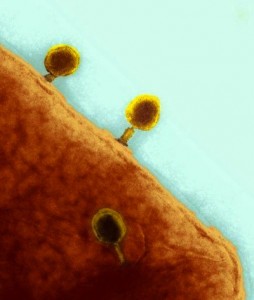 When dangerous bacteria come near the mucous the virus attack and kill them. Without mucous infested with virus, invading bacteria are much more dangerous. In the recent study, phages reduced the bacteria by 10,000 times. The most common phages attack the most common bacteria using a form of “mucous memory” even when mucous is wiped and cleaned away.
When dangerous bacteria come near the mucous the virus attack and kill them. Without mucous infested with virus, invading bacteria are much more dangerous. In the recent study, phages reduced the bacteria by 10,000 times. The most common phages attack the most common bacteria using a form of “mucous memory” even when mucous is wiped and cleaned away.
These phage viruses are ubiquitous in nature. Humans attract a layer of these protective viruses in all mucous membranes, especially the mouth and the gut. As strange as it sounds the virus attract specific types of microbes by placing specific DNA in them to protect them in the mucous.
Virus Are Critical For Function of Human Embryonic Stem Cells
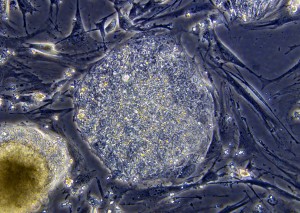 Human endogenous retroviruses, HERV, have placed almost 100,000 elements in the human DNA, which account for 8% of all the DNA in our cells. Most are fragments, and none appear to be a full active virus. But, some do appear to be active and produce RNA. They have been incorporated into the human genome over millions of years. One in particular now seems critical for the function of current human stem cells. This was discovered recently in attempting to find factors to reprogram skin cells into iPS (Nobel Prize in 2012).
Human endogenous retroviruses, HERV, have placed almost 100,000 elements in the human DNA, which account for 8% of all the DNA in our cells. Most are fragments, and none appear to be a full active virus. But, some do appear to be active and produce RNA. They have been incorporated into the human genome over millions of years. One in particular now seems critical for the function of current human stem cells. This was discovered recently in attempting to find factors to reprogram skin cells into iPS (Nobel Prize in 2012).
Embryonic stem cells have large numbers of HERV-H virus and they aren’t in other types of cells. RNA from HERV-H is 2% of all RNA in the stem cells. The factors that control HERV-H also control reprograming of skin cells to make induced pluripotent stem cells, iPSC. HERV-H makes a long non coding RNA, lncRNA, not a protein, which appears to be vital for stem cell function. The amount of pluripotency correlates with the amount of HERV-H RNA present and only in humans and chimps.
Human Placenta From Virus DNA
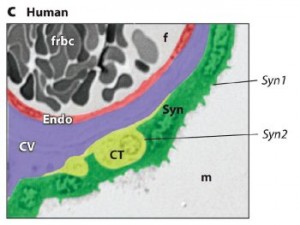 Cells in the placenta make an important protein called syncytin, only where they make contact with the uterus. This single cellular layer allows the fetus to draw nutrients from the mother. Without syncytin the fetus would die.
Cells in the placenta make an important protein called syncytin, only where they make contact with the uterus. This single cellular layer allows the fetus to draw nutrients from the mother. Without syncytin the fetus would die.
The gene that codes syncytin is not a human gene but a virus gene placed in the human DNA. Syncytin originally allowed viruses to fuse with the membranes of their host cells to enable spreading from one cell to another. This gene seems to have appeared in the ancestors of humans, gorillas and monkeys.
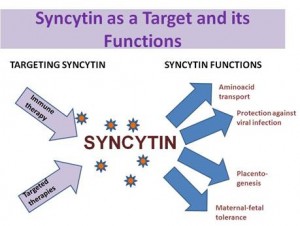 A second version called syncytin2, also from virus DNA, appears to help control the mother’s possible immune reaction to the fetus foreign tissue. When women have dangerous high blood pressure, called pre eclampsia, both syncytin 1 and 2 levels drop.
A second version called syncytin2, also from virus DNA, appears to help control the mother’s possible immune reaction to the fetus foreign tissue. When women have dangerous high blood pressure, called pre eclampsia, both syncytin 1 and 2 levels drop.
Even more strange is the fact that different versions of this protein have been found in mice and rabbits, each from entirely different viruses than those in primates and humans. At least six different times in evolution different viruses have helped different animals with the same task of making placentas. Meanwhile, pigs and horses do not have the same type of placentas because they didn’t get infected with the virus.
Epigenetics and the Influenza virus
 A new mechanism of negative activity by flu viruses involves mimicking epigenetic regulation in human cells and suppressing antiviral genes. Flu circumvents cell defenses and co-opts protein synthesis, producing their own products to fight immunity. Now, a new mechanism is found whereby flu makes a protein, NS1, that mimics histone proteins regulating gene expression.
A new mechanism of negative activity by flu viruses involves mimicking epigenetic regulation in human cells and suppressing antiviral genes. Flu circumvents cell defenses and co-opts protein synthesis, producing their own products to fight immunity. Now, a new mechanism is found whereby flu makes a protein, NS1, that mimics histone proteins regulating gene expression.
 Major epigenetic regulation of DNA includes protein factors placed on DNA and methyl or acetyl attachment to histone proteins. Enzymes add or subtract these attached particles. H3N2 influenza virus uses the NS1 particle, which resembles a part of the histone, to bind to a complex involved in creating the messenger RNA and the histone methylation. These actions stop the action of important anti viral factors.
Major epigenetic regulation of DNA includes protein factors placed on DNA and methyl or acetyl attachment to histone proteins. Enzymes add or subtract these attached particles. H3N2 influenza virus uses the NS1 particle, which resembles a part of the histone, to bind to a complex involved in creating the messenger RNA and the histone methylation. These actions stop the action of important anti viral factors.
Another unique behavior of the flu virus was discovered this year:
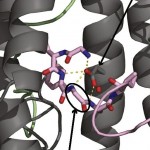 Flu attacks like a pirate boarding a ship. Flu virus has eight RNA strands enclosed in a membrane. Cells enclose the virus in a sac. The virus fuses its membrane with the sac to get out. To fuse the sac the virus uses a protein called hemagglutinin (H in H1N1). The protein extends like a hook to the membrane. Once grabbing the membrane it pulls the two membranes together. This action is like a pirate placing a hook. The virus needs at least three or four hooks in the same region to accomplish this.
Flu attacks like a pirate boarding a ship. Flu virus has eight RNA strands enclosed in a membrane. Cells enclose the virus in a sac. The virus fuses its membrane with the sac to get out. To fuse the sac the virus uses a protein called hemagglutinin (H in H1N1). The protein extends like a hook to the membrane. Once grabbing the membrane it pulls the two membranes together. This action is like a pirate placing a hook. The virus needs at least three or four hooks in the same region to accomplish this.
Other Newly Discovered Virus Behavior
- Viruses will kill a cell slowly if there are no other viruses around so they can manufacture as many new viruses as possible. But, if other viruses are present they kill the cell faster, making sure they outlast their competing viruses.
- Viruses also recruit ribosomes to use viral messenger RNA to make their products. By dominating the ribosomes they inhibit other antiviral factors. Each of the many steps in translation are targeted and manipulated by viruses (A future post will discuss these multiple complex different mechanisms).
- Viruses carry genes similar to the bacteria for increasing capture of phosphorus. Inside photosynthetic ocean bacteria, when phosphorus is in short supply, a bacteria revs up phosphorus gathering. The virus offers the bacteria help with the phosphorus gathering by transferring genes. But, the virus tricks the virus by instead using all the new phosphorus to help the virus replicate and eventually kills the cell releasing the virus to infect others.
 A new transport system, a molecular sled, has been observed in viruses seeking to move rapidly and efficiently in the nucleus. The molecular sled consists of proteins from adenovirus, which slide along the DNA double helix like a train on its tracts, to find other proteins to interact with. This is much more efficient way to find molecules to interact with than has been observed in cells previously.
A new transport system, a molecular sled, has been observed in viruses seeking to move rapidly and efficiently in the nucleus. The molecular sled consists of proteins from adenovirus, which slide along the DNA double helix like a train on its tracts, to find other proteins to interact with. This is much more efficient way to find molecules to interact with than has been observed in cells previously.
- Viruses have been thought to be either covered with a lipid envelop or not. This has been one of the major ways that viruses have been classified in all textbooks. Now, Hepatitis A virus has been observed to break this rule. The hepatitis A virus does not have an envelop in the environment, but as soon at it grows in the liver it gets an envelop confusing the cell, which responds to it as if it does not have a cover.
Virus Intelligence Update
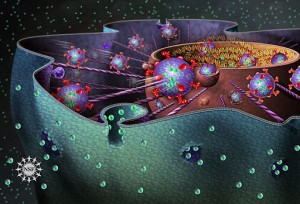 The more viruses are observed the more their behavior appears complex. Viruses are able to manufacture factors that help them evade all levels of immunity — innate, adaptive, and intrinsic — as well as the attacks from a vast number of microbes. They are able to hijack complex cellular signaling pathways, take over important cellular motors, and fool the very complex guards at the nuclear pore. Despite all the complexity at many levels of human DNA and RNA regulation, they are able to insert themselves into DNA and provide invaluable services to the human stem cells and placenta.
The more viruses are observed the more their behavior appears complex. Viruses are able to manufacture factors that help them evade all levels of immunity — innate, adaptive, and intrinsic — as well as the attacks from a vast number of microbes. They are able to hijack complex cellular signaling pathways, take over important cellular motors, and fool the very complex guards at the nuclear pore. Despite all the complexity at many levels of human DNA and RNA regulation, they are able to insert themselves into DNA and provide invaluable services to the human stem cells and placenta.
Viruses and virus-like particles traffic in genetic information that is made available to all cells. Providing the genetic code to resist antibiotics is just one of thousands of types of services viruses provide for other cells. But, in fact, there are many other virus like particles that also provide the same services. Jumping genes have been discussed in a previous post as virus like particles that are the real drivers of evolution. New ways that brain cells send information to each are being observed. The next post will discuss the discovery of entirely new types of very large viruses (that are infested by virus like particles) and a wide range of types of particles that transmit vital information to and from all cells. If viruses are intelligent and sentient, then these other particles are also. The post will discuss their place in evolution.
